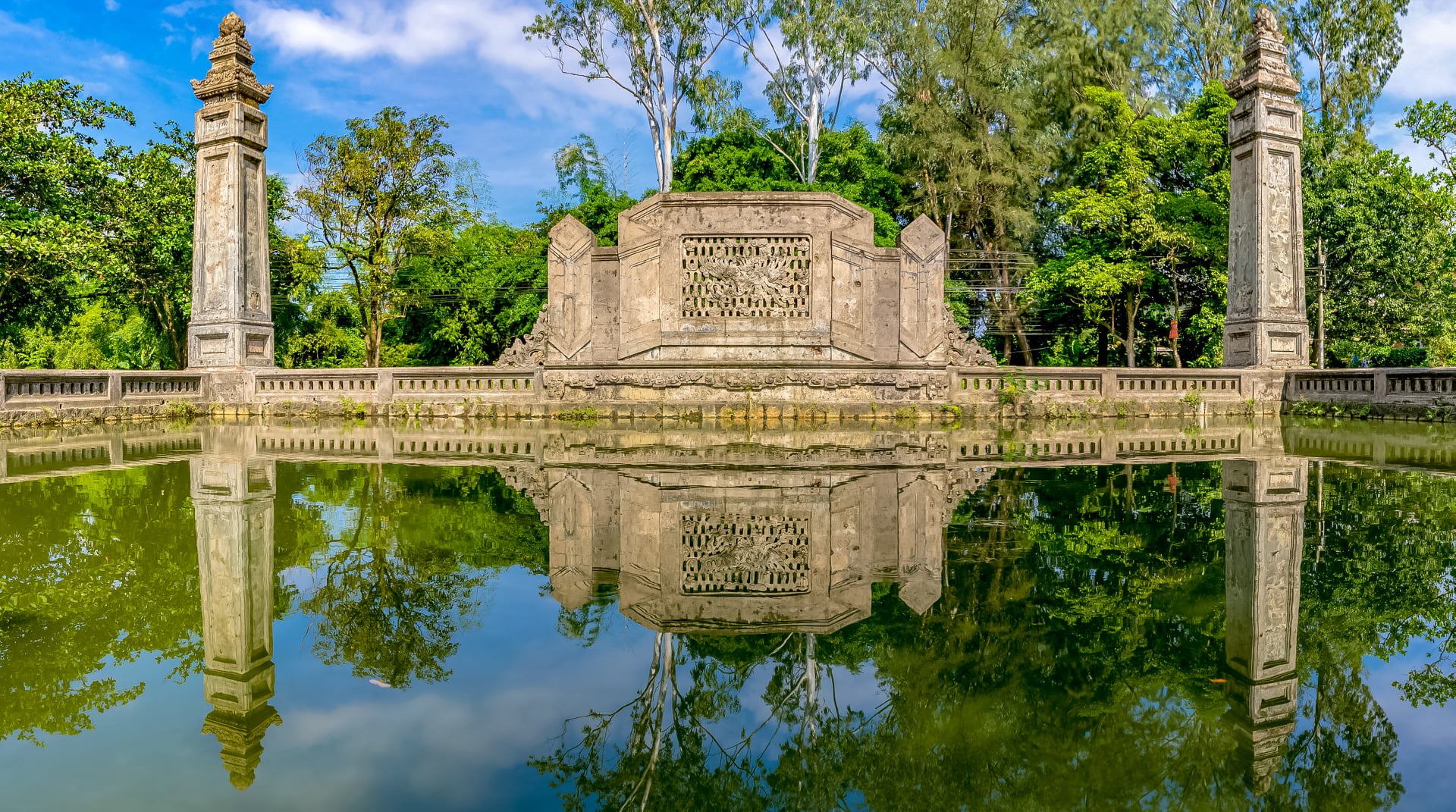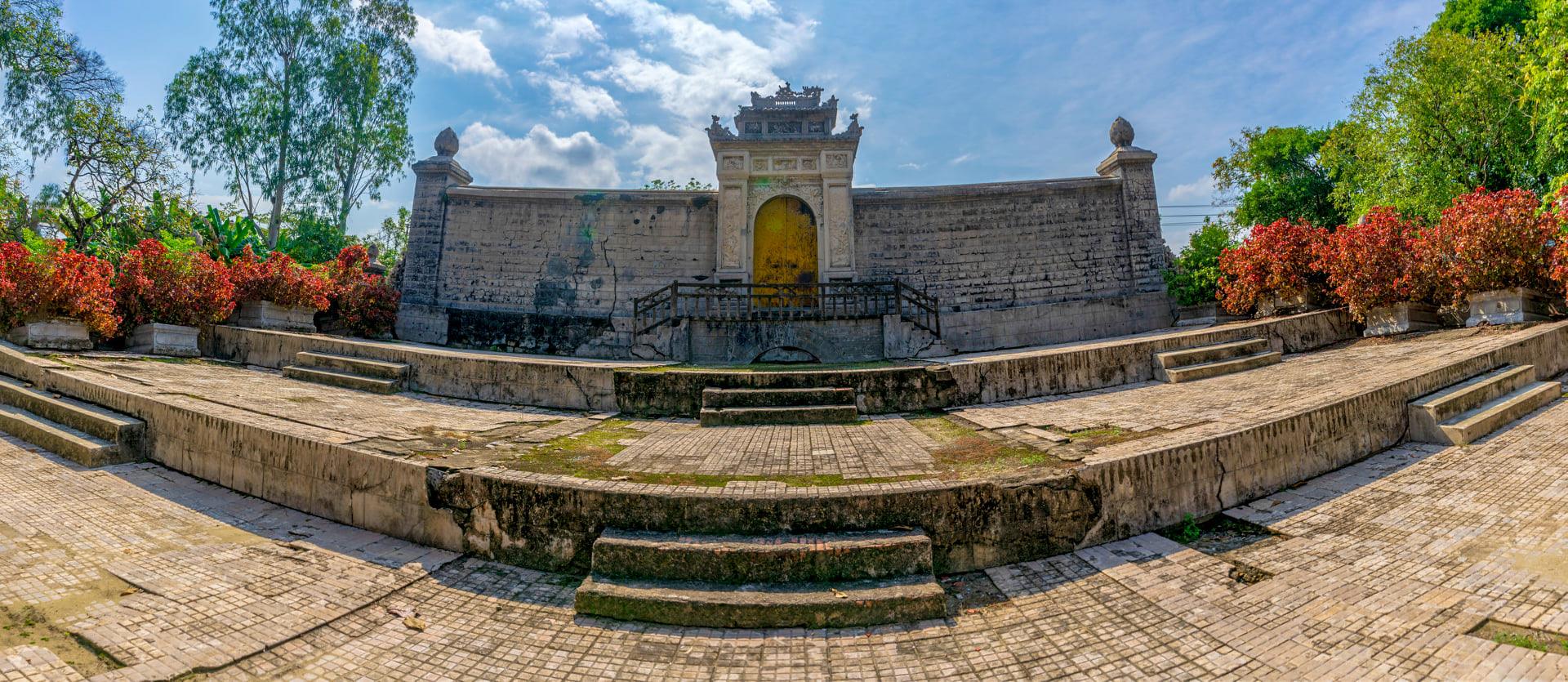Van Van Mausoleum runs along the Northwest - Southeast axis, located completely in a strip of land between An Dong Ward, Hue City today. The mausoleum is based on the feng shui position "Located in the mountain, the direction of water" and "Ta Thanh Long, Huu Bach Ho, Tien Chu Tuoc, Hau Huyen Vu".

Specifically, the Van Van Mausoleum leaned back against Ngu Binh mountain in the distance behind, in front of which there was a flow of water. This water is the "Tien Chu Tuoc", which the An Cuu people call the bald, starting from the sub-mountain area flowing through Cong Bac and reaching the An Cuu River.
In front of the mausoleum, there is a large screen of a mountain keeper. On either side are two large, superficial chart pillars. The two sides of the front yard have a system of Penjing with symbols for Ta Thanh Long, and Huu Bach Ho.

The design principle of the Van Van mausoleum is not strictly beyond the ancient feng shui system. Although located on plain land, the mausoleum is also built on a mound about 4m above the ground, called Huyen Cung. Surrounded by Buu Thanh, Huyen Cung is located in the center of the mausoleum, which is also the secret location of the mausoleum. Huyen Cung has an area of about 400m2, surrounded by two solid citadels. The outer citadel is 4,5m high, 0,76m thick. The inner citadel is 3m high, 0,6m thick. The two citadels are built of bricks and cement.

The entrance to the Huyen Cung has only one door at the front, called Buu Thanh Mon. Arched door, above is the two fake roofs.
Stepping through Buu Thanh is a screw-shaped ornament screen. The screw-shaped ornament is richly decorated with motifs such as Bat Buu (Eight precious objects), Tu Thoi (Four seasons),... but the focus is still on the stylized Van Tho letter. On the back is a picture of phoenixes hidden in clouds. Following the screen is the entrance to the Huyen Cung campus with a relatively narrow entrance of about 2m.

In the middle of the Huyen Cung is a stone tomb designed like a small house built on the steps. The four corners have a parapet with a lotus-shaped pillar and 8 pairs of fruits: peach, custard, mango, and pomegranate. 8 pairs of fruits or 8 pillars dotted with lucky symbols are all meant to protect the mother of the world and have a good sleep. Not only that, but such a sacred gathering point of feng shui will also deliver posterity to descendants.
At the end of Huyen Cung's yard, there is also a screw-shaped ornament screen. The front is decorated with a stylized Van